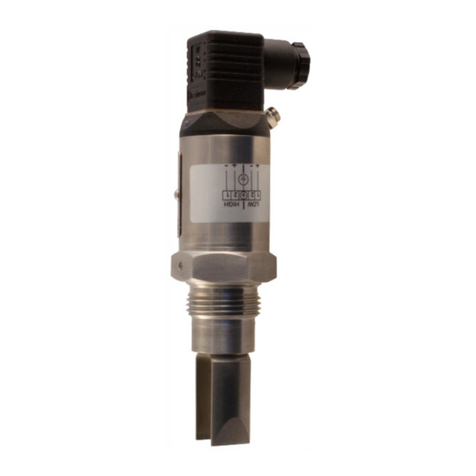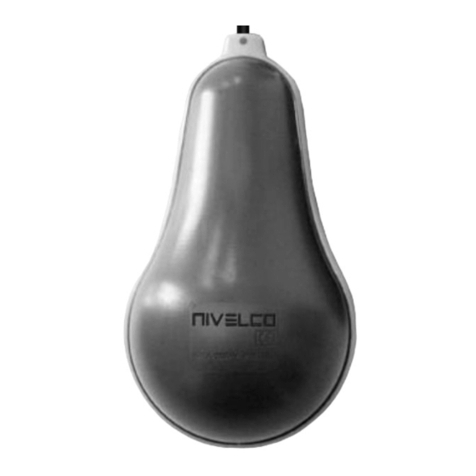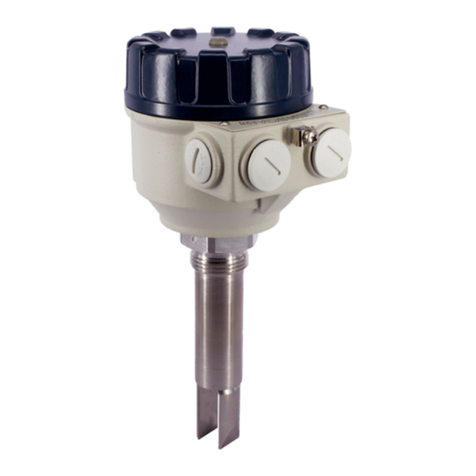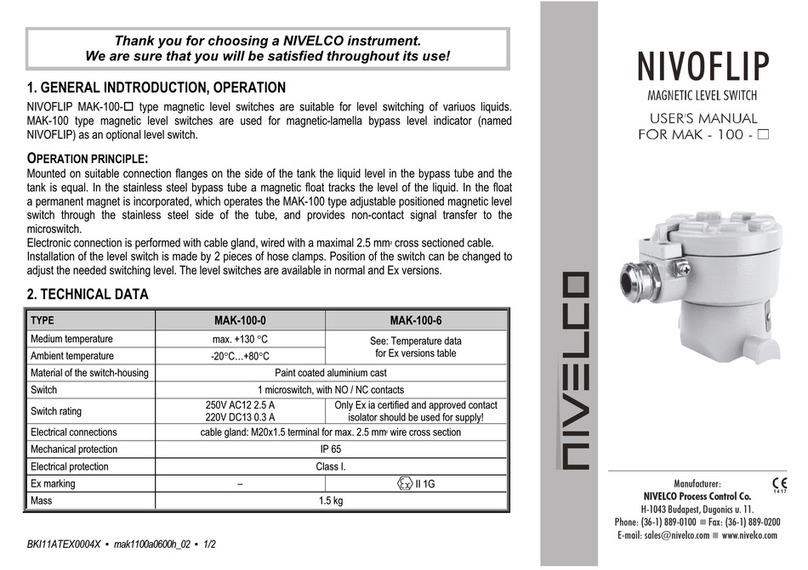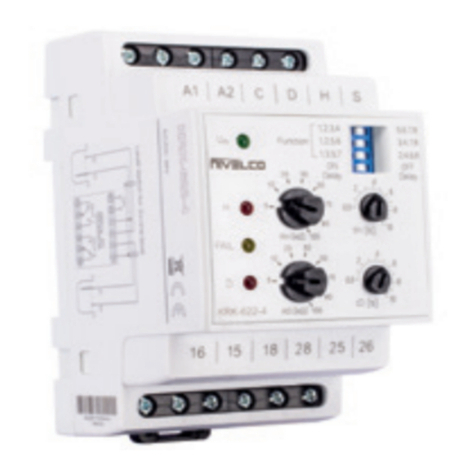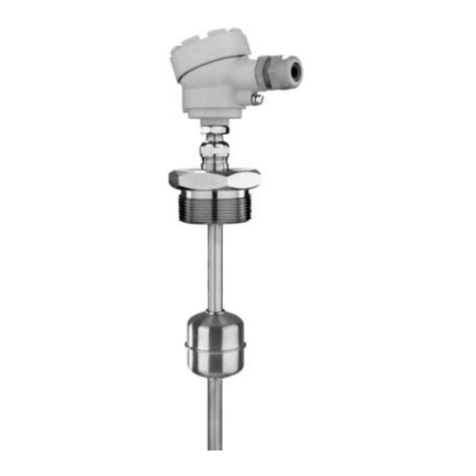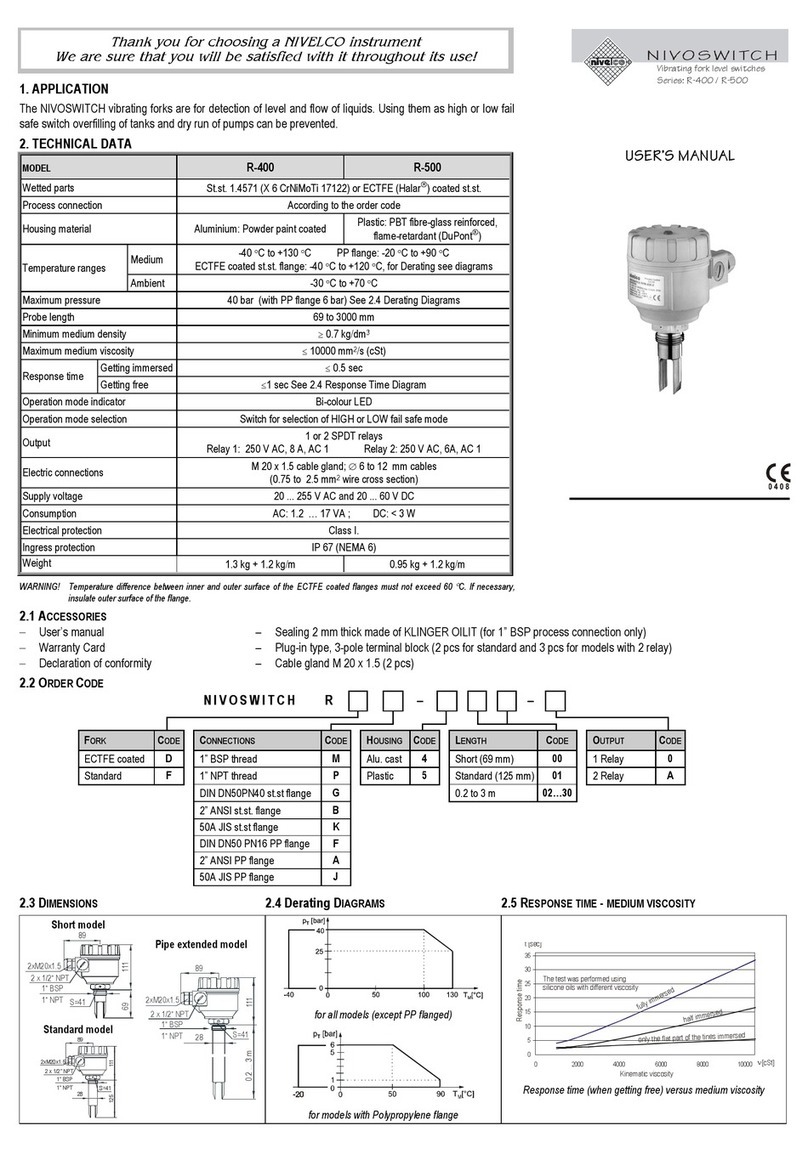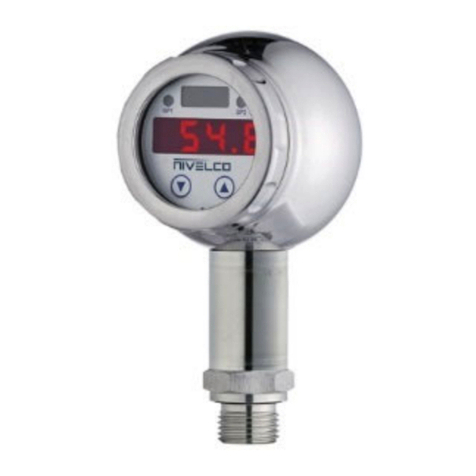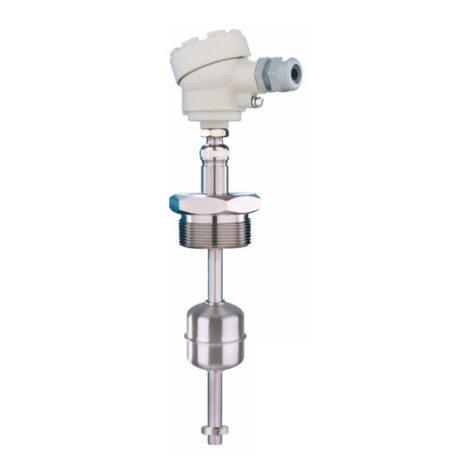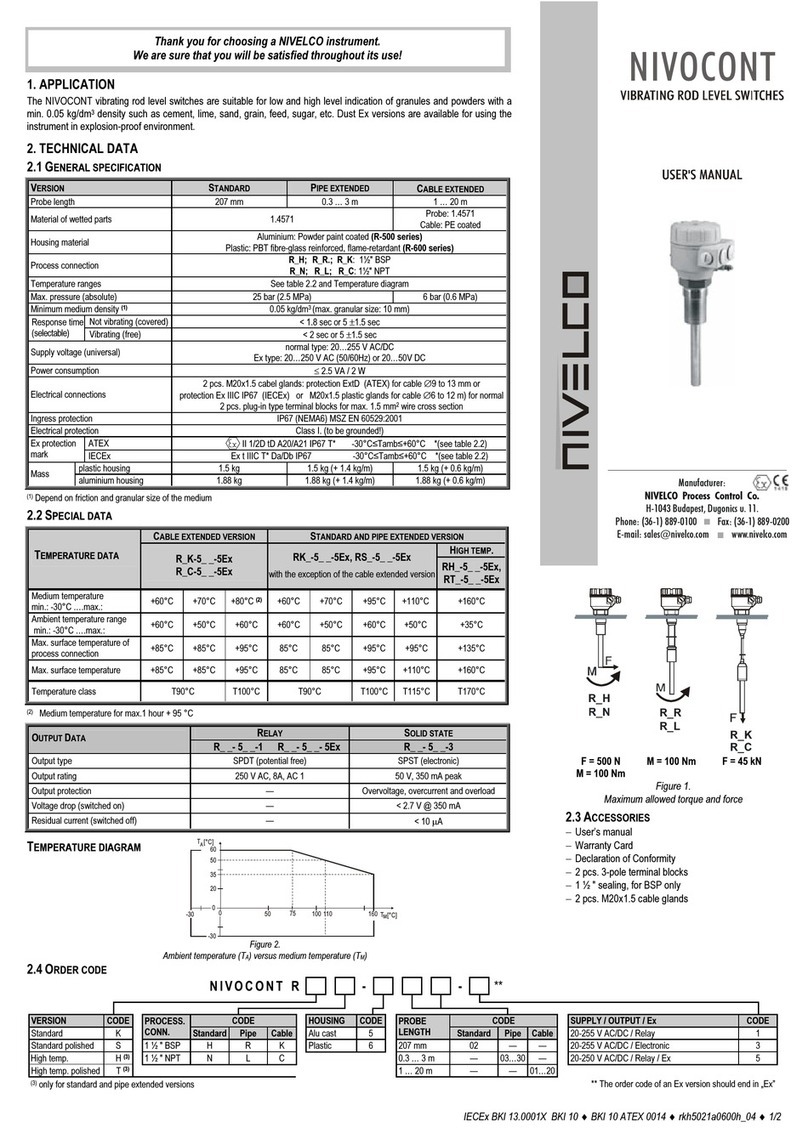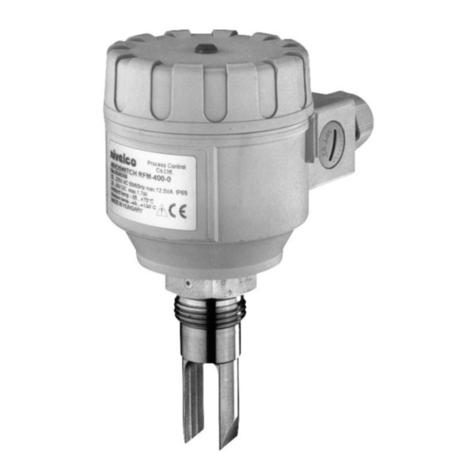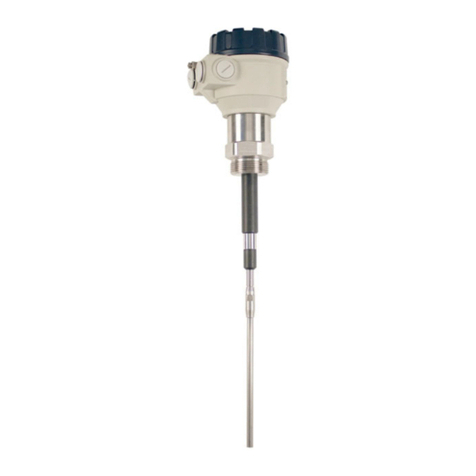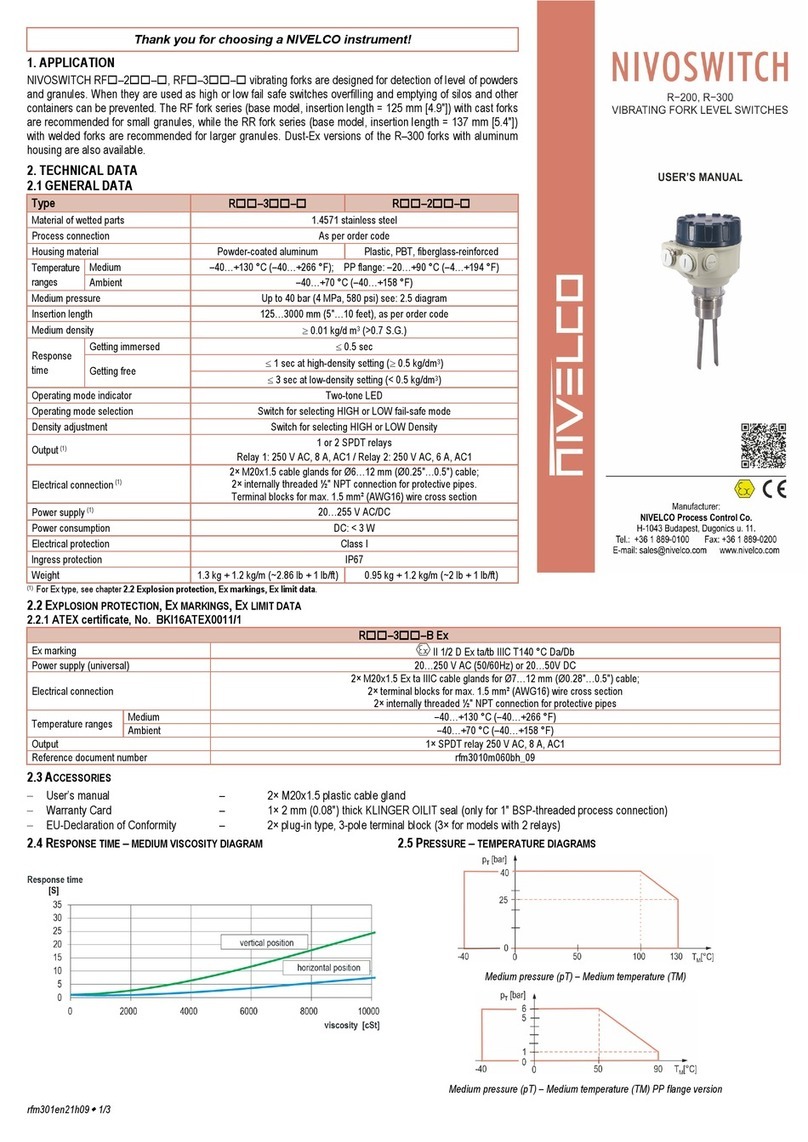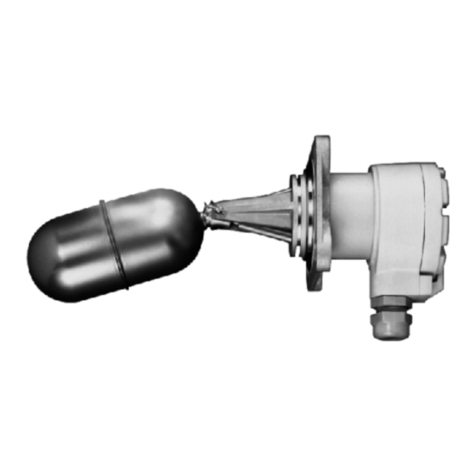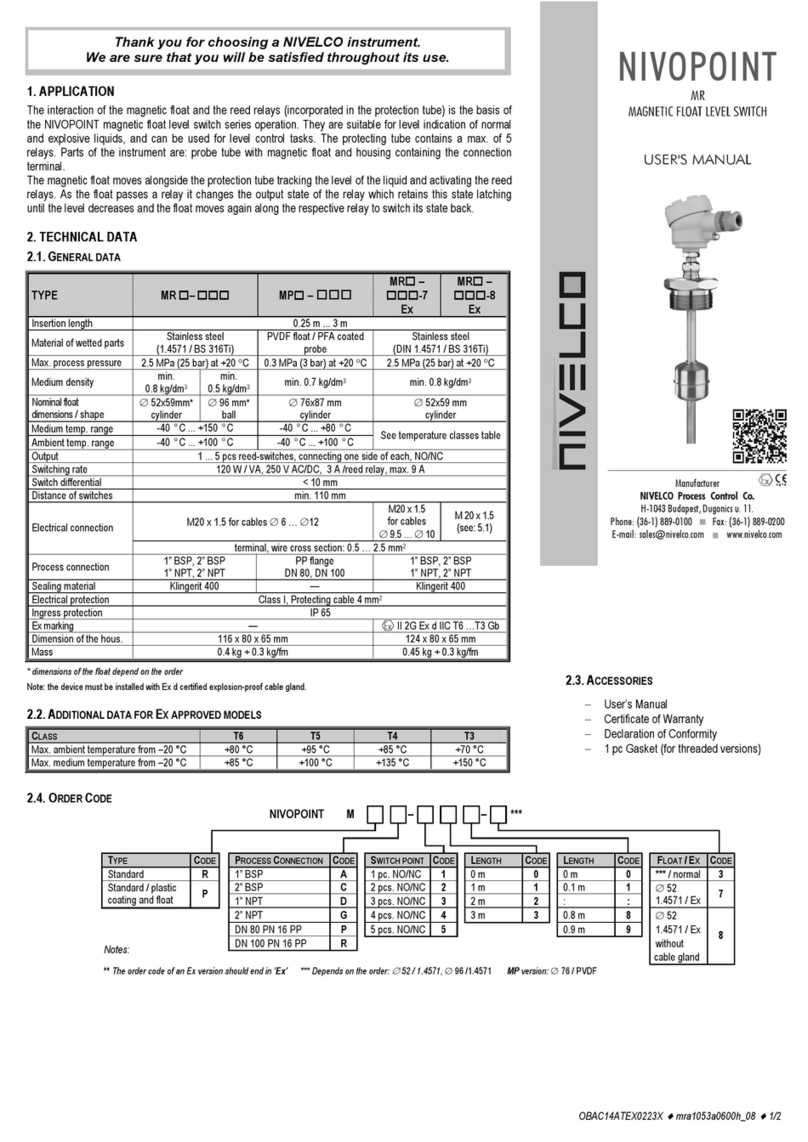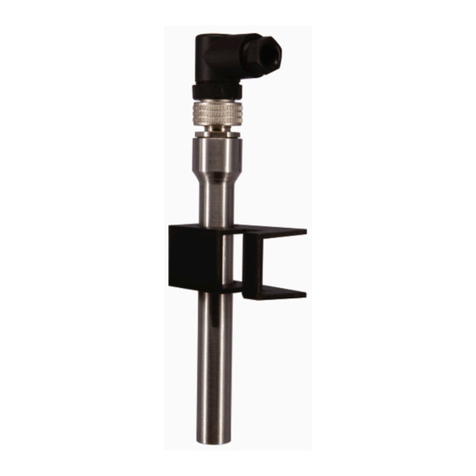
dkc3127a0600p_01 - 8/20
3. TECHNICAL DATA
Type DK-3-DK-4-, DL-4-DK-82-
Measurement range
-1 – 0 bar; 0 – 600 bar
(-14.5 – 0 psig; 0 – 8700 psig)
according to the order code
-1 – 0 bar; 0 – 40 bar
(-14.5 – 0 psig; 0 – 580 psig)
according to the order code
-1 – 0 bar; 0 – 600 bar
(-14.5 – 0 psig; 0 – 8700 psig)
according to the order code
Overload capability According to the order code
Accuracy 0.5%
Optional: 0.25% (p ≥0.4 ba
[5.8 psig]) 0.5%
Medium temperature -40 °C … +125 °C
(-40 °F … +257 °F) -40 °C … +125 °C (-40 °F … +257 °F) silicone oil; (1)
-10 °C … +125 °C (14 °F … +257 °F) food grade oil
-40 °C … +125 °C (-40 °F … +257 °F) (2)
mbient temperature (2) -40 °C … +85 °C (-40 °F … +185 °F) (with integrated cable: -5 °C … +70 °C [23 °F … +158 °F])
Sensor type Piezoresistive
Materials of the
wetted parts
Sensor Stainless steel 1.4435 (316L) Stainless steel 1.4435 (316L);
Optional: HASTELLOY®C-276 (2.4819) Ceramic Al2O396%
Sensor sealing
FKM;
Optional: welded version, without sealing
(max. 40 bar [580 psig])
FKM (recommended medium temperature ≤+200 °C
[392°F]);
FFKM (recommended medium temperature > +200 °C
[392°F]);
TriClamp, hygienic flange (DIN11851), VARIVENT:
without sealing
FKM
EPDM (PN≤160 bar [2320 psig])
Process conn. Stainless steel 1.4404 (316L) Stainless steel 1.4435 (316L) Stainless steel 1.4404 (316L); PVDF(5)
Housing Stainless steel 1.4404 (316L) Stainless steel 1.4404 (316L); PVDF
Outpu
1 PNP switch output (3) or 2 PNP switch output (3) or 4 PNP switch output (4)
Analog output (optional) / Power supply
/ Load resistance
4 – 20 mA output (2-wire) / 13 V – 36 V DC / Rmax = [(USupply-13V) / 0,02 A] Ω;
4 – 20 mA output (3-wire adjustable) / 19 V – 30 V DC / Rmax = 500 Ω;
0 – 10 V output (3-wire) / 15 V – 36 V DC / Rmin = 10 kΩ;
Without analogue output / 15 V – 36 V DC / -
Display
4 digits (7 mm), red LED display;
Range of indication: -1999 … +9999;
Accuracy: 0.1% ±1 digit;
Damping: 0.3
30 s (adjustable)
Process connection
ccording to the order code
Electrical connection M12x1 (5 pin – metal) / M12x1 (8 pin – plastic) / ISO4400 /
Integrated cable – standard 2 m PVC cable or custom cable lengths –without ventilation tube
Ingress protection IP65
Electrical protection SELV Class III
Mass min. 0.16 kg (min. 0.35 lb) ~ 0.16 kg – 0.25 kg (~ 0.35 – 0.55 lb) ~ 0.2 kg (~ 0.44 lb)
(1) For DK-400 types max. temperature of the medium for nominal pressure gauge > 0 bar: +150 °C (+302 °F) for 60 minutes with a max. environmental temperature of +50 °C (+122 °F)
(2) For DK-800 in case of PVDF pressure port the minimum permissible temperature is -30 °C (-22 °F)
(3) For devices with ISO 4400 connection, only 2-wire transmitter can be used with 1 PNP switch. It is not possible to use a PNP contact with a 3-wire transmitter, and only 1 PNP switch is possible for Ex devices.
(4) The use of 4 PNP contacts is only possible with analogue 3-wire 4 – 20 mA or 0 – 10 V transmitter equipped with M12x1, 8-pin connection
(5) 1/2" BSP,p ≤60 bar; 3/4" BSP, 0,6 bar ≤p ≤25 bar
